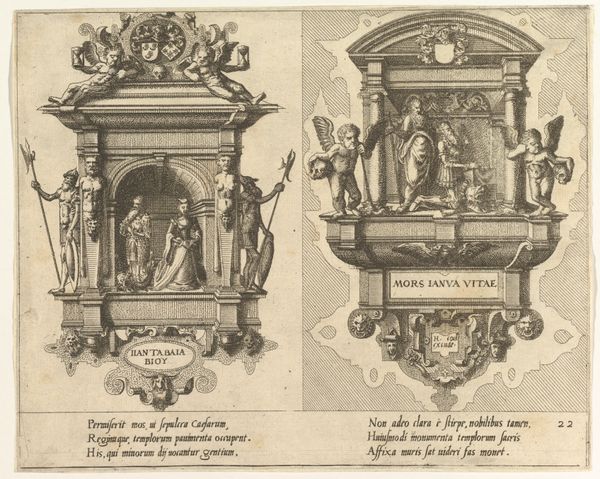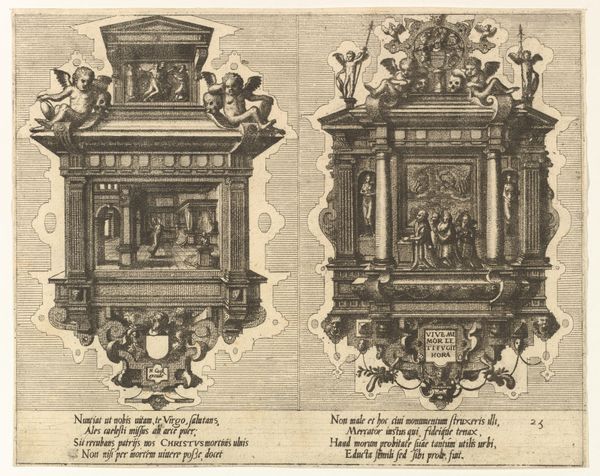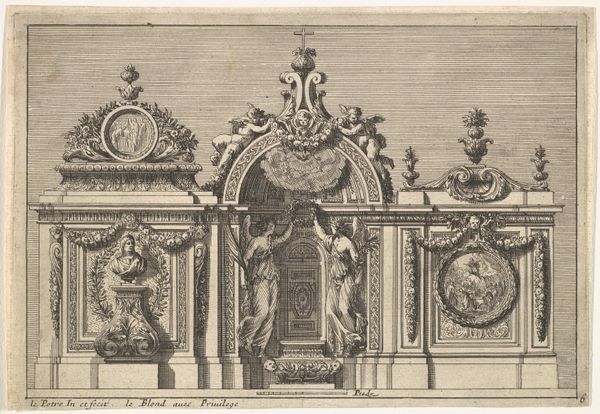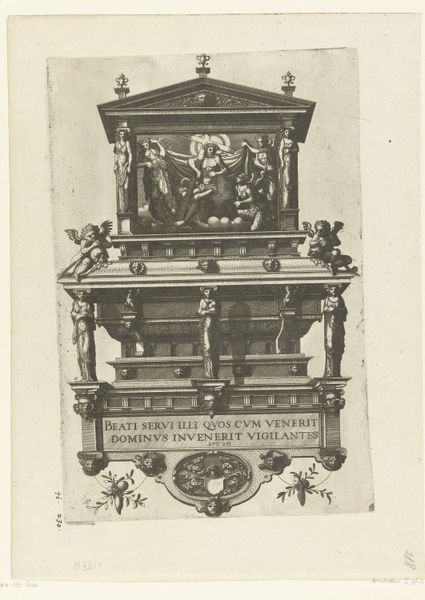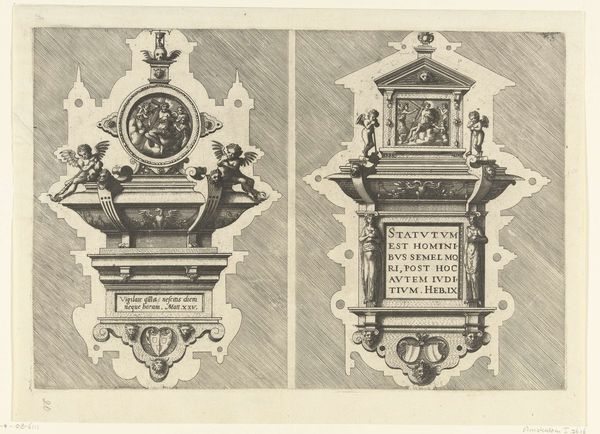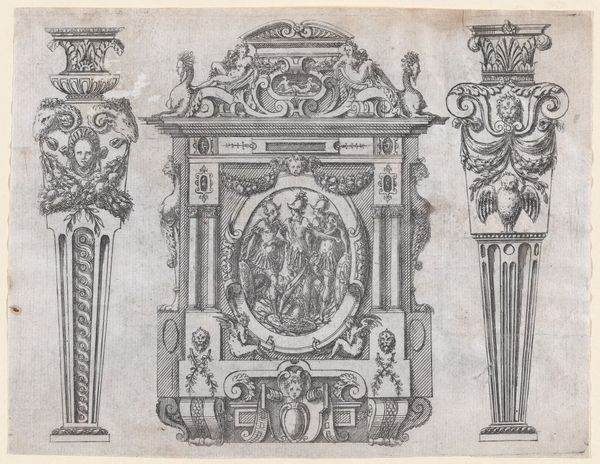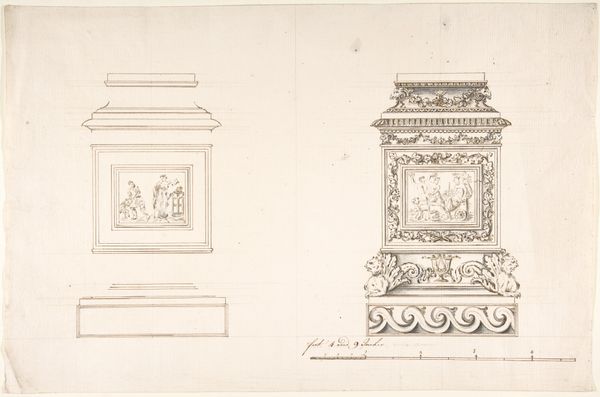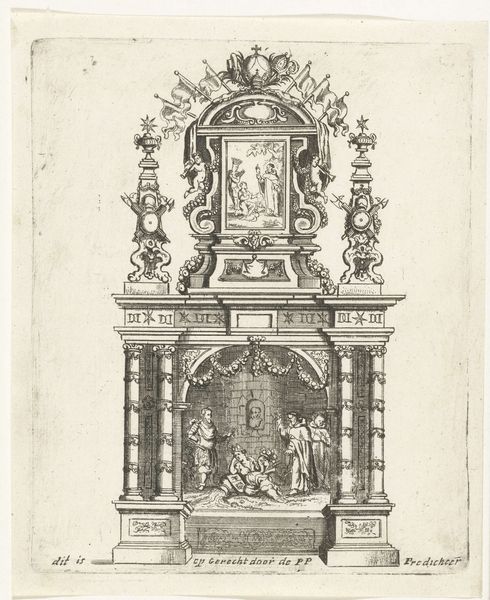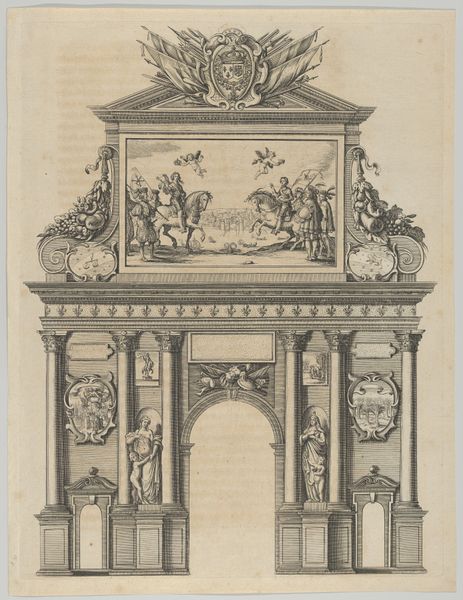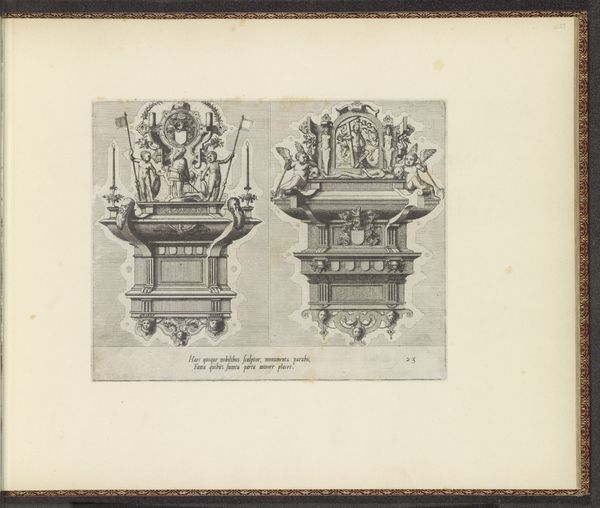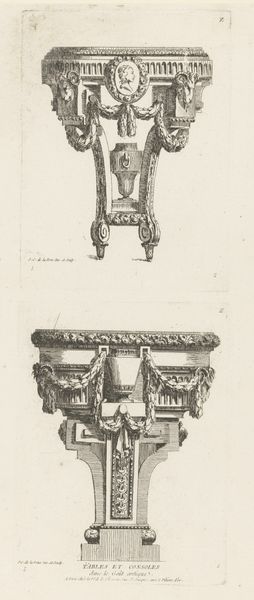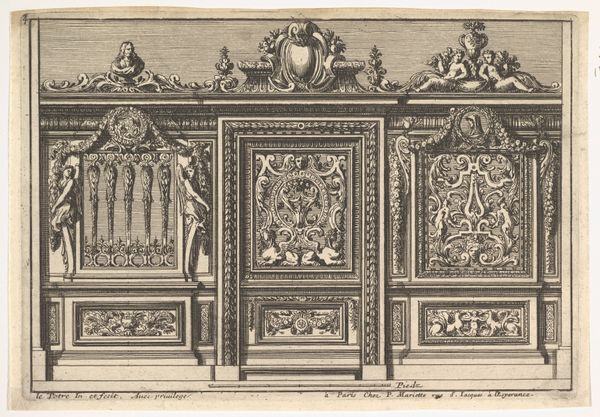
drawing, print, engraving, architecture
#
drawing
# print
#
mannerism
#
engraving
#
architecture
Dimensions: sheet: 6 11/16 x 8 3/8 in. (17 x 21.2 cm)
Copyright: Public Domain
Curator: Take a look at this engraving from 1563 by Hans Vredeman de Vries titled "Cenotaphiorum (23)". The Met owns it, and it showcases a design for elaborate architectural monuments. What strikes you first about it? Editor: Immediately, a sense of morbid grandeur. The intricacy is impressive, but the abundance of skulls and somber figures suggests a preoccupation with death, specifically a powerful class dynamic even in memoriam. Curator: That's a keen observation. During the late Renaissance and the rise of Mannerism, there was a real interest in extravagant displays of wealth and power, even within funereal art. Think about how socio-political forces at the time influenced these symbolic expressions, reflecting hierarchical societal values. Editor: Precisely. And beyond that, how does this obsession with elaborate tombs actually perform power? We need to examine whose stories are elevated, what narratives are prioritized, and who has the power to dictate them through this art. Curator: Absolutely. The symbolism here is heavily reliant on classical motifs. Look at the cherubs, the weaponry, and heraldry, referencing ideas of piety and valor that elevated the status of those commemorated. The viewer is invited to reflect on how the image functions within early modern institutions, politics of imagery, and artistic movements. Editor: The symmetry feels somewhat strained, though, and the decoration edges toward the grotesque. What statements do those stylistic decisions, or even anxieties, contribute about the artist and their subjects? What does the intentional departure from classical standards signify, culturally? Curator: These kinds of engravings served as design inspiration for architects and sculptors. It circulated ideas about memorial structures during a period when these forms were shifting and evolving under influence from both classical precedents and the changing social order. Editor: Reflecting upon Vredeman de Vries's "Cenotaphiorum (23)", one confronts not merely aesthetics but societal inscriptions, prompting a discussion on authority, memory, and who controls visual discourse. Curator: I agree; its potent imagery provides critical insights into the social fabric and commemorative customs of the era.
Comments
No comments
Be the first to comment and join the conversation on the ultimate creative platform.
